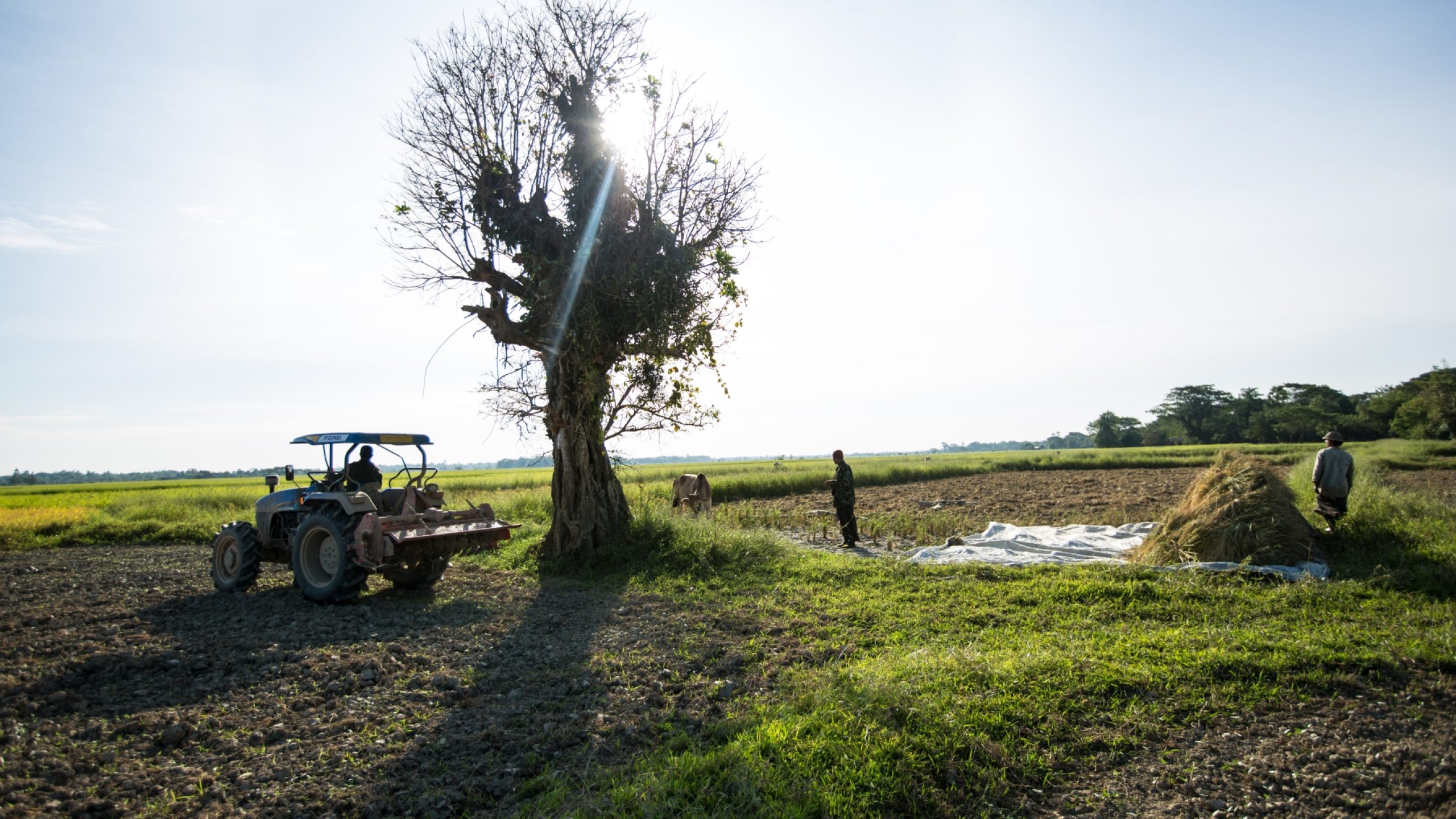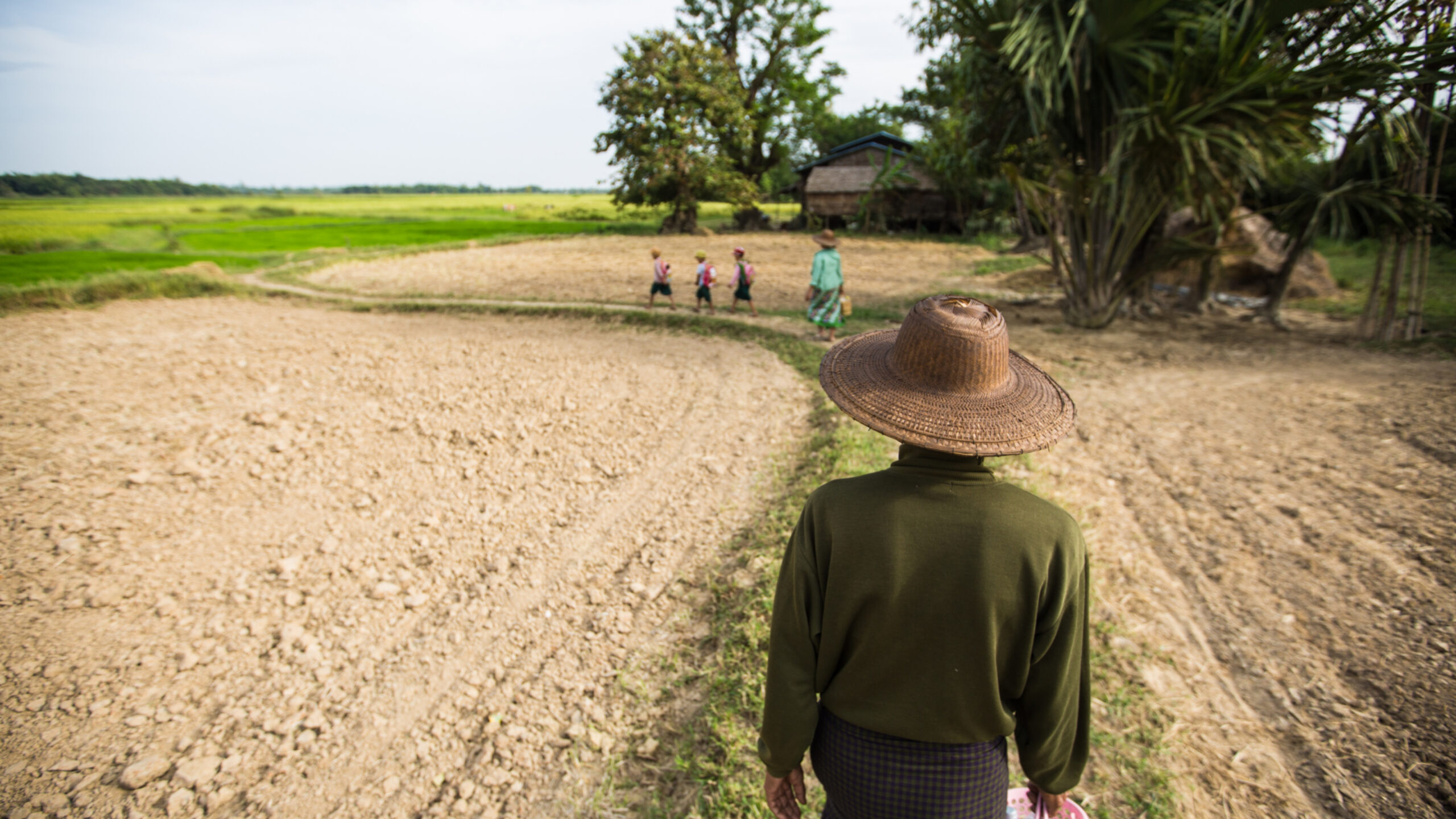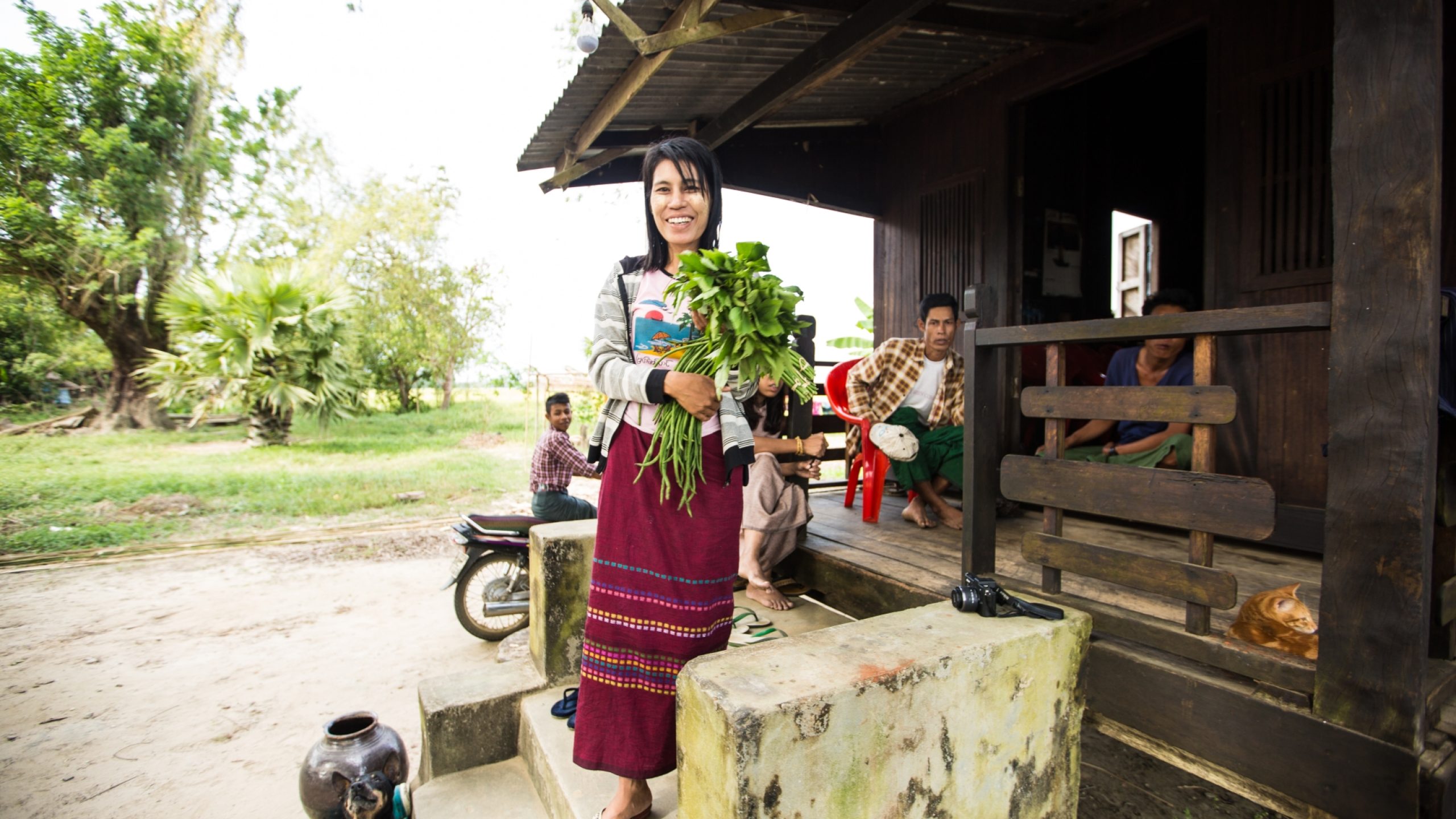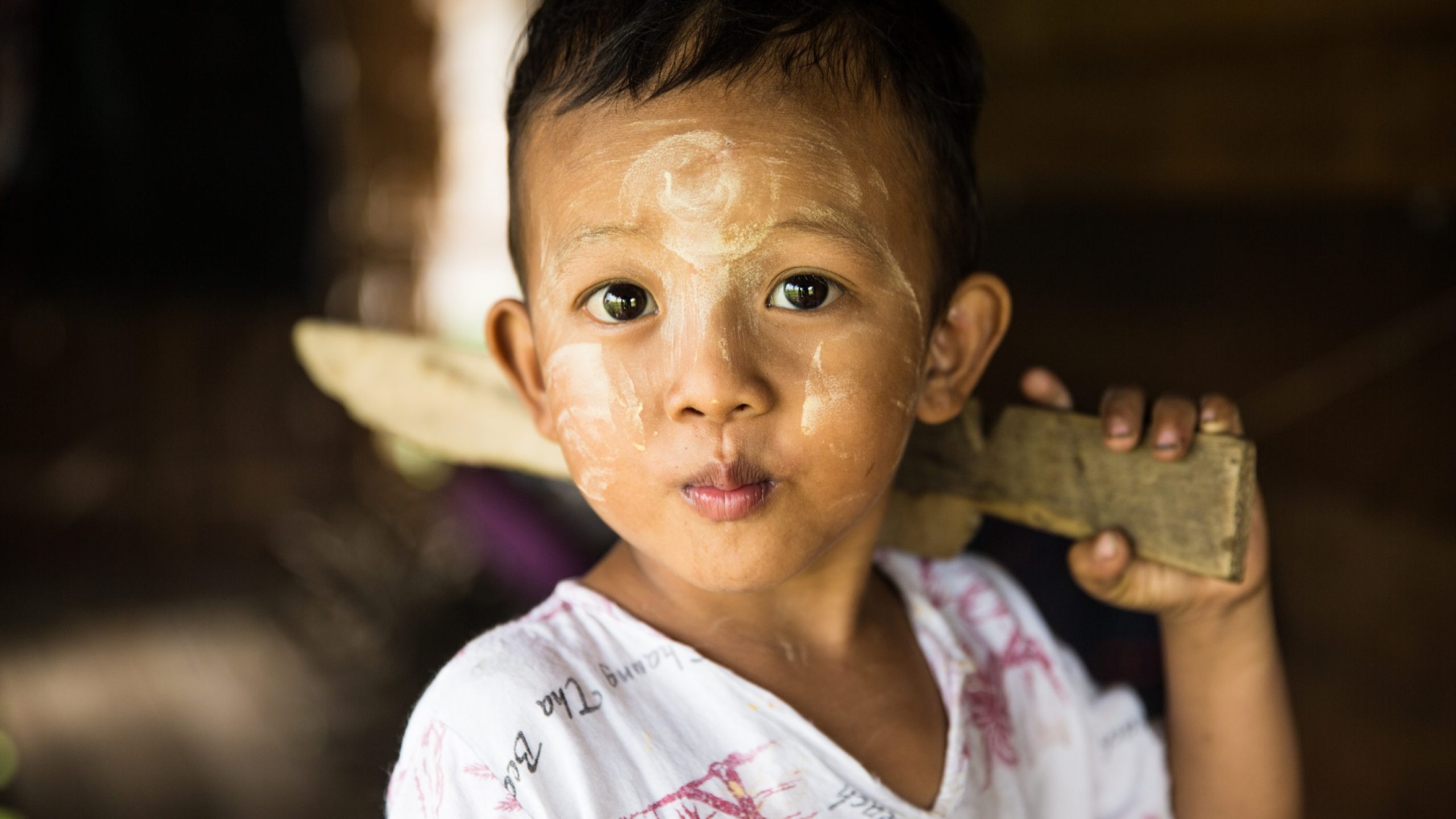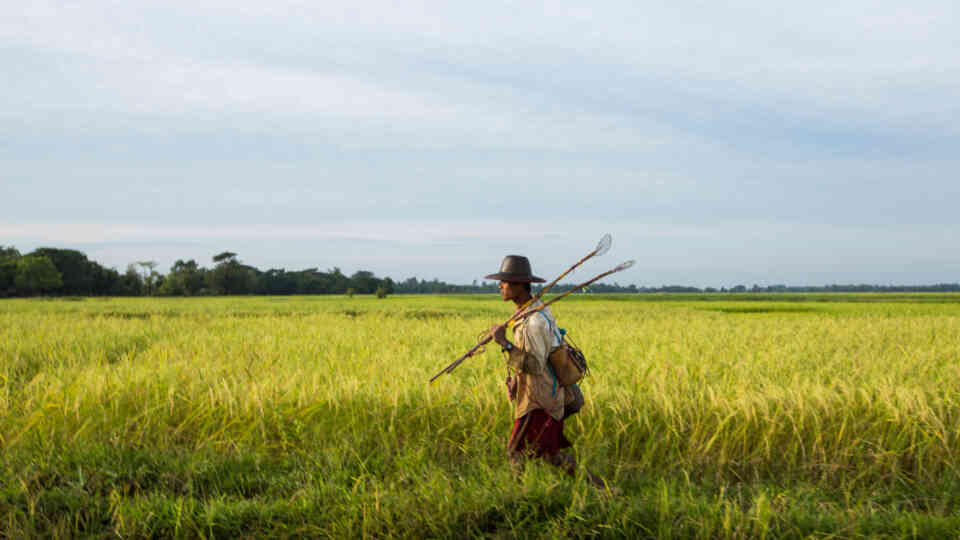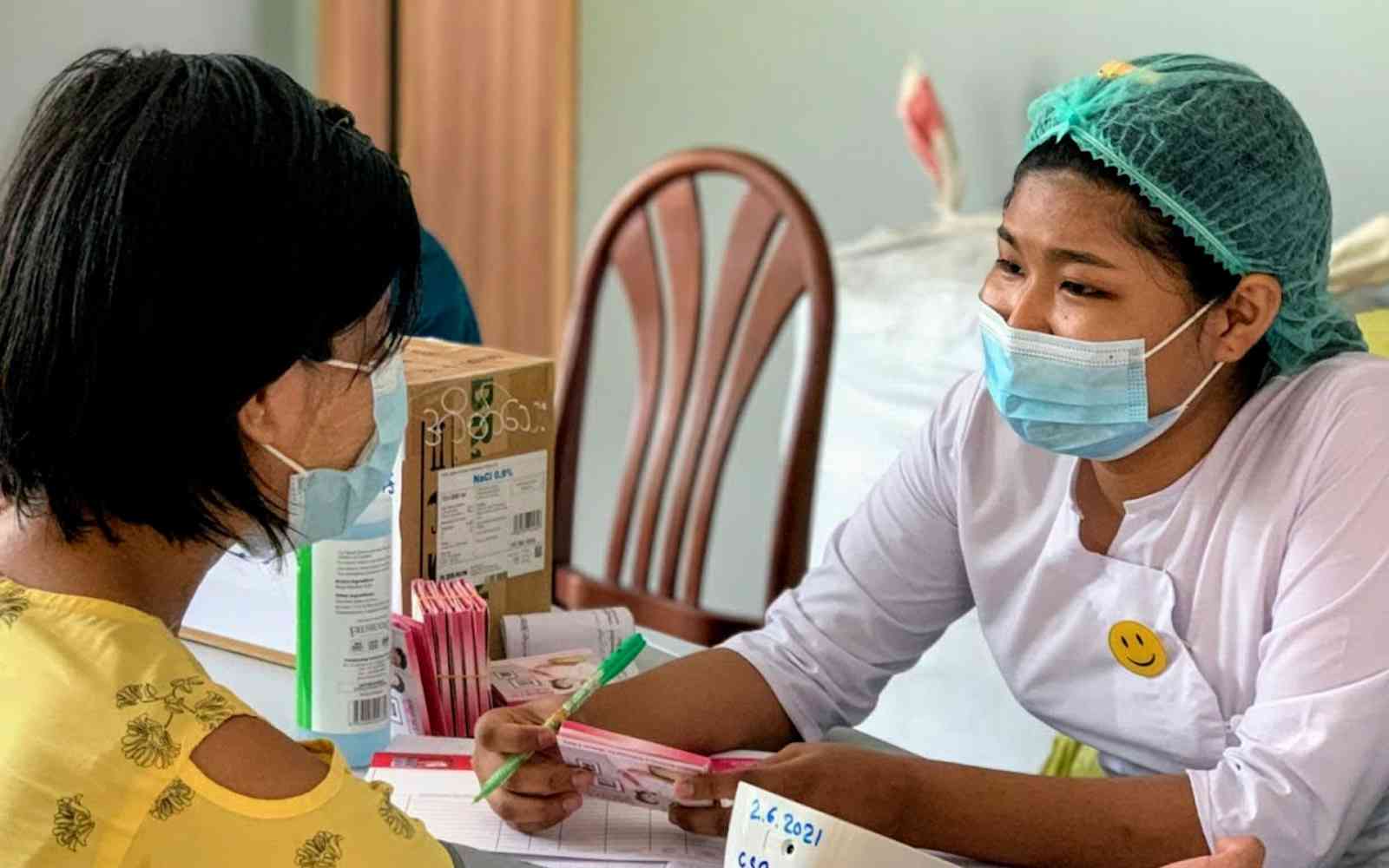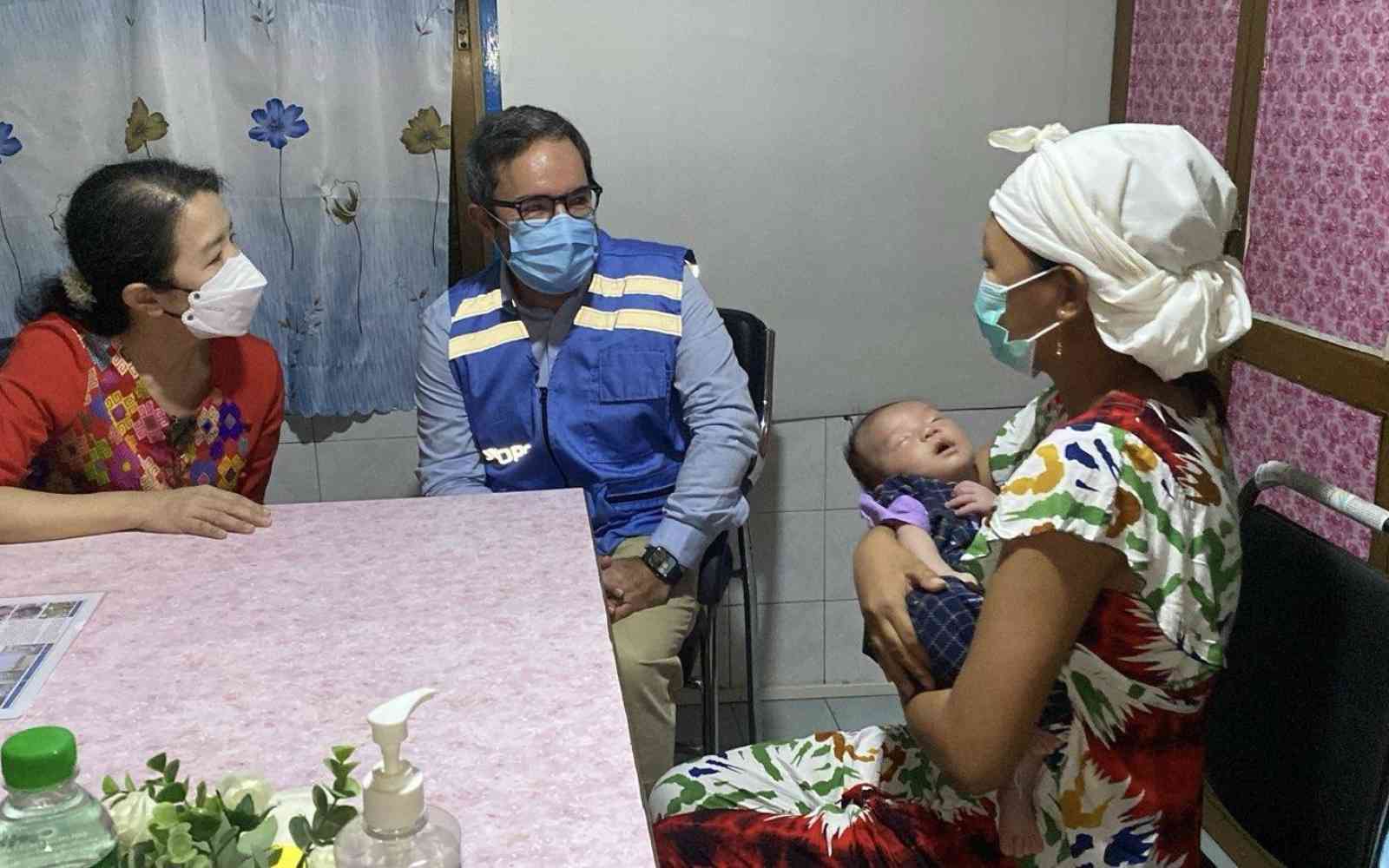The United Nations Office for Project Services (UNOPS)

A new future for rural Myanmar
Agriculture offers great opportunities to drive development and raise living standards for millions of people in rural Myanmar.
An estimated 51.4 million people live in Myanmar. More than a quarter of the population lives below the national poverty line.
Seventy percent of the population lives in rural parts of the country, encompassing three-quarters of the overall poverty share.
But as the largest country in mainland Southeast Asia, Myanmar has one of the lowest population densities in the region. Combined with highly fertile lands, the country has significant potential to increase its production and profits in agriculture.
Below is the story of one family that shows how improved farming practices have helped change their lives, for the better…

In Kyar Kan Taunt, a village in the Ayeyarwady Delta, some 100 kilometres west of Yangon, Yin Hlaing, 70, lives with his wife, six children and nine grandchildren. The family lives on 57 acres of land passed down from Yin Hlaing’s father. He shares this with his sons.
Annually, the family sets out to produce rice and black gram. The crop is highly time sensitive – if planting is not completed on time, farmers could lose up to 60 percent of their potential yields.
Since childhood, Yin Hlaing has worked the farm, helping look after the cows used to plough the land.
The farming methods used were labour intensive and time consuming, having to tirelessly work through Myanmar’s annual monsoon season.
But over the past year, the family’s farming practices have dramatically changed.
After trying to save money and research tractors for years, Yin Hlaing and his family had the opportunity to buy a tractor through the Yoma Bank Agribusiness Finance Programme funded by the Livelihoods and Food Security Trust (LIFT) Fund in early 2016.
Quickly, the family benefitted. What used to take three or more months is now done in five days, while at the same time, achieving better yields.
A new future
Min Htike, the youngest son, and all of his brothers went with their father to purchase the tractor and sign the contract.
Now, his ambitions have grown. Min Htike wants to have a well-structured farm, and roads and electricity in the village.
He hopes to one day buy a combine harvester, purchase more land and develop a farm demonstration plot on their land for farmer’s education.

This tractor was ours. My dream had come true.
Yin Hlaing’s wife, Daw Than Than, recalls how hard it was to watch her family working so hard in the rice fields, trying to finish the work in time for the crop’s season.
When her children were young, the family struggled a lot. They could not afford to have all of the children stay in school – they needed them to stay back and work on the farm.
She feels that her grandchildren are now in a different era. The possibility of them finishing school and getting an education feels more real. The eldest granddaughter is already attending university in Pathein, approximately 30 minutes from their village.
The mechanization of the farm means the entire family has more time for social activities in the village, and more free time to spend with one another. And children can just be children.




The village benefits
Min Htike also lends a hand to his neighbours.
The landowner, U Ma Saw, and his nephew, Hpa Nyant, pay 20,000 Kyat (approximately $15) for the use of the tractor, which is less than what it costs them to do the same work manually.
Work completed in one hour would have taken two days with cows and two farm workers.
About 20 other farmers have rented Yin Hlaing’s tractor in the past eight months. All the farms in the village that plant black gram are now prepared – and Yin Hlaing says he feels confident the village will have a good season, and is proud knowing his tractor played a part in achieving this.
The family’s eldest son, Hla Moe Khaing, discusses the labour shortages in the area, and how the village farms have been negatively affected, with workers leaving the fields for the better-paying garment industry.
Without the tractor, he feels him and his family would have been left behind.
Now, with more confidence in what the future holds for his family, Yin Hlaing appreciates the simple things in life – like his daily walk to the village school to collect his granddaughter.
Project details
To help improve the lives and prospects of smallholder farmers and landless people in rural Myanmar, the Livelihoods and Food Security Trust Fund was established in 2009.
By the end of 2016, 7.2 million rural people – or roughly 20 percent of Myanmar's rural population – had received LIFT support. In 13 states and regions and 222 townships, 1.6 million households had directly benefited from LIFT activities by the end of 2016, including 240,000 female-headed households. Nearly 200,000 households had received support in agricultural production and just over 163,000 people were trained in agricultural techniques.
The LIFT-funded Agribusiness Finance Programme (AFP) provides affordable finance for tractors, threshers, combine harvesters and other equipment to thousands of farmers across Myanmar. Since the AFP began in 2016, farmers and rural entrepreneurs, many of whom would otherwise not have been able to afford to introduce machines to their farms, have taken up 3,125 lease contracts for farm machinery valued at more than $60 million.
LIFT is supported by the Governments of the United Kingdom, the European Union, Australia, Denmark, France, Ireland, Italy, Luxembourg, the Netherlands, New Zealand, Sweden, Switzerland, the United States of America and the Mitsubishi Corporation. Funds are pooled for aid effectiveness and are managed by UNOPS. The Fund's mandate has been extended twice at the request of donors, and activities are expected to continue at least until the end of 2018.











